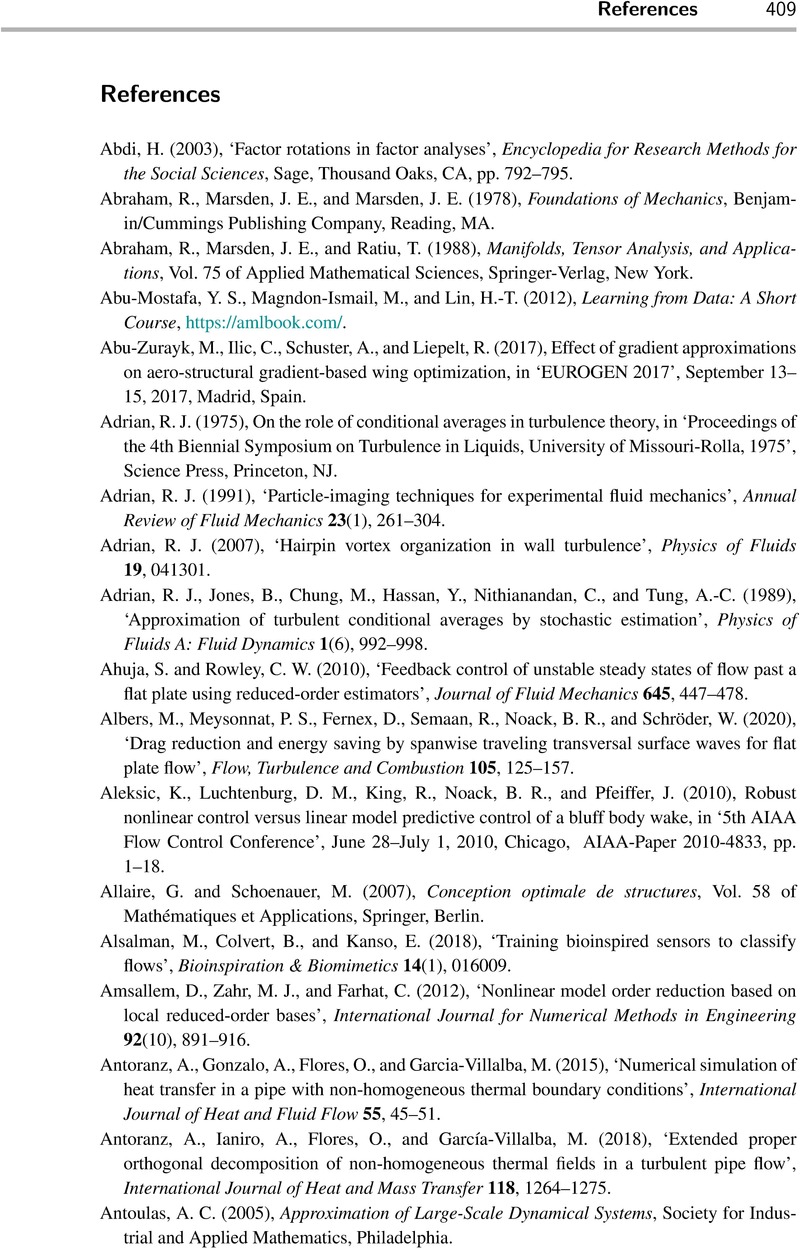References
Published online by Cambridge University Press: 12 January 2023
Summary

Information
- Type
- Chapter
- Information
- Data-Driven Fluid MechanicsCombining First Principles and Machine Learning, pp. 409 - 448Publisher: Cambridge University PressPrint publication year: 2023
